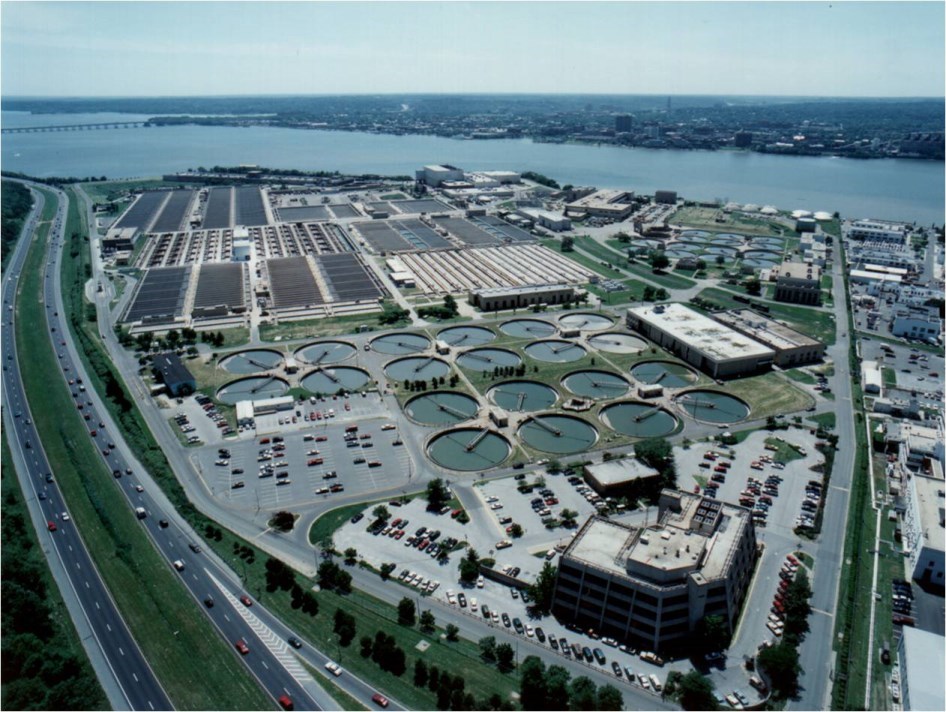The plant opened in 1938 as a primary treatment facility, and advanced treatment capacity was added in the 1970s and 1980s. The effluent that leaves Blue Plains is discharged to the Potomac River and meets some of the most stringent permit limits in the United States.
.jpg)
The plant has a treatment capacity of 370 million gallons per day (mgd) or 1.4 Gl per day, with a peak capacity (partial treatment during large storms) of 1.076 billion gallons per day (4.07 Gl/day). The plant occupies 150 acres (0.61 km2) in the southwest quadrant of Washington, D.C. and discharges to the Potomac River. It serves over 2 million customers in Washington, large portions of adjacent Prince George's County and Montgomery County in Maryland, and portions of Fairfax County and Loudoun County in Virginia.
.jpg)
.jpg)
The original Blue Plains facility opened in 1938 as a primary treatment facility. It discharged under 100 mgd, serving a population of 650,000. Population increases in the 1950s led to the construction of secondary treatment units in 1959, with an expanded discharge capacity of 240 mgd. In the 1970s a major expansion commenced that led to construction of advanced wastewater treatment components, and by 1983 the capacity was 300 mgd.
.jpg)
According to wikipedia




![[HONORARY PROFESSOR OF RECORD FOR PRACTICE AND EMPIRICAL RESULTS – 2024] RECORD HOLDER CHU BAO QUE (BAC GIANG PROVINCE, VIETNAM)](https://uskings.us/wp-content/uploads/2024/05/IMG_0386-218x150.jpg)



